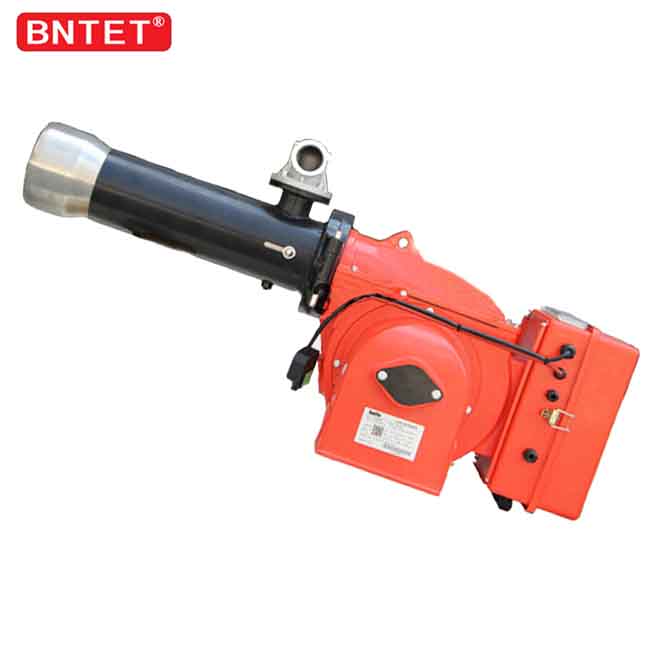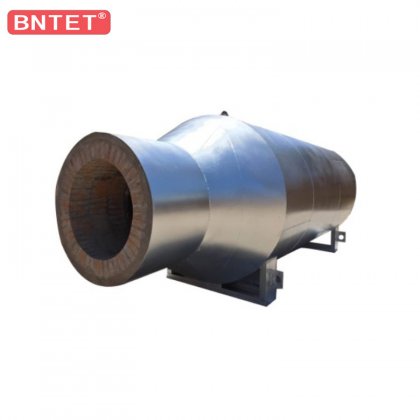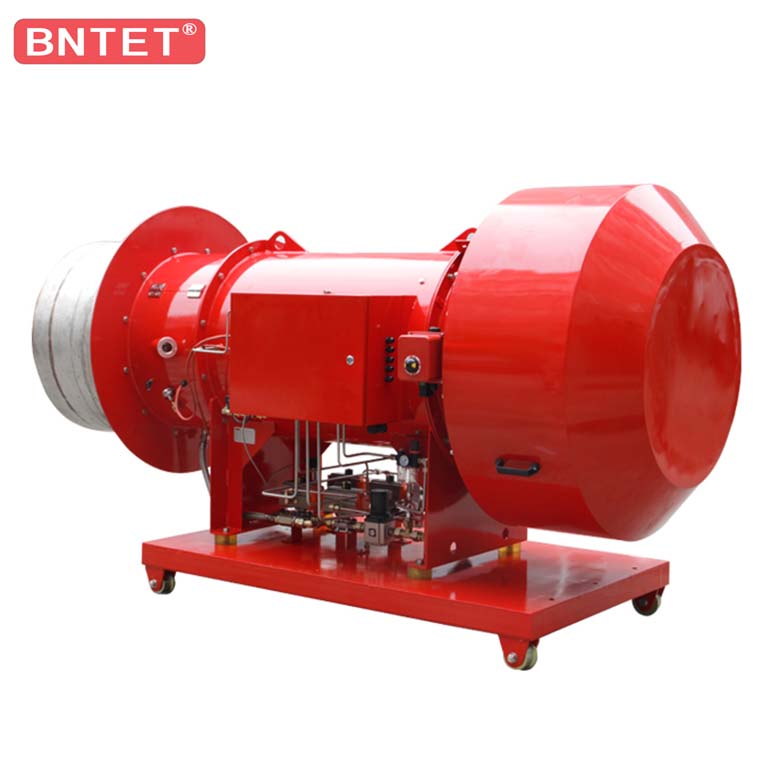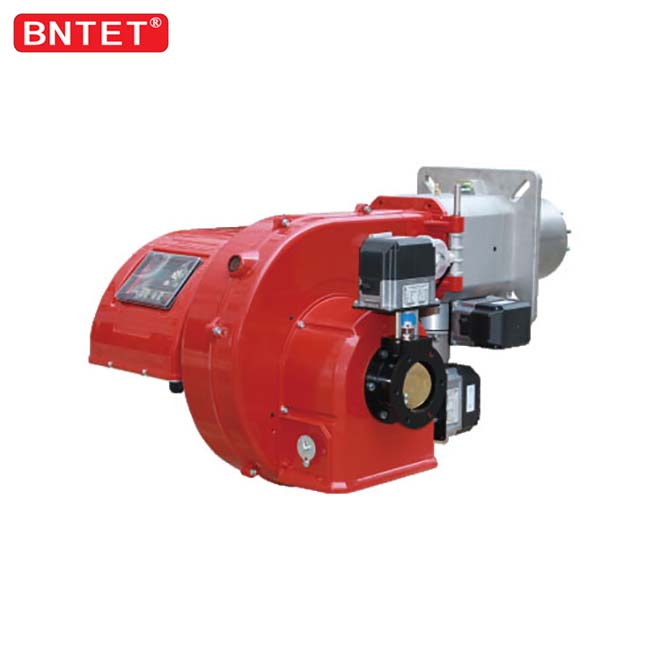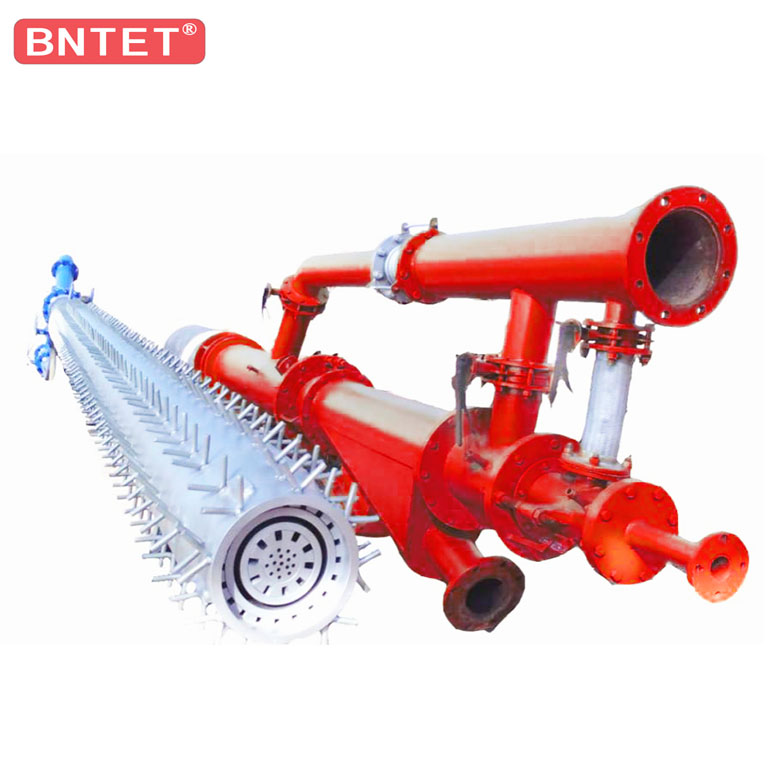The fuel nozzle (also known as the oil gun or atomizing nozzle) of a diesel boiler burner is its core component, whose performance directly affects combustion efficiency, stability, and pollutant emissions. Based on the atomization principle and structure, they can be primarily classified into the following major categories:

I. Classification by Atomization Method (The Core Classification)
1. Pressure Mechanical Atomization Nozzle
This is the most common and widely used type. Its principle involves using an oil pump to pressurize the fuel oil (typically 1.0 - 2.5 MPa). The high-pressure fuel oil is ejected at high speed from the fine holes at the nozzle tip, where it breaks up into a fine oil mist due to the sudden pressure drop and intense friction with the air.
Simple Pressure Atomization Type:
Working Principle: Has only one fuel circuit, making it the simplest in structure.
Characteristics: The fuel flow rate is proportional to the square root of the oil pressure. Adjusting the combustion output requires changing the oil pressure. At low loads, the oil pressure decreases, leading to poorer atomization quality.
Application: Suitable for occasions with stable load or low requirements for adjustment range.
Return Flow Pressure Atomization Type:
Working Principle: Has both inlet and return fuel circuits. Regardless of boiler load changes, a constant, high inlet oil pressure is maintained to ensure atomization quality. The fuel output is regulated by adjusting the opening of the valve on the return line, thus controlling the return flow rate. Fuel Output = Inlet Flow - Return Flow.
Characteristics: Maintains good atomization quality across the entire load range, with a wide turndown ratio.
Application: The most mainstream choice in modern industrial boilers, suitable for occasions with frequent and wide load variations.
2. Medium-Assisted Atomization Nozzle (Pneumatic Atomization)
Its principle utilizes the energy of a high-speed stream of gas (usually steam or compressed air) to impact the fuel flow, breaking it into a mist. It has lower requirements for the fuel's own pressure.
Steam Atomization Type:
Working Principle: Steam is ejected at very high speed from the nozzle, tearing the fuel oil into tiny droplets.
Advantages: Excellent atomization quality, very fine oil droplet size; better adaptability to fuel oil viscosity; the nozzle is less prone to coking and clogging.
Disadvantages: Requires a steam source, increasing system complexity; carries away some furnace heat, slightly reducing efficiency; produces steam noise.
Application: Large power station boilers, marine boilers, or occasions burning heavy oil, residual oil, and other inferior fuels.
Air Atomization Type:
Working Principle: Similar to steam atomization, but the atomizing medium is compressed air (typically at 0.3-0.7 MPa pressure).
Advantages: Good atomization quality, avoids the heat loss and noise issues associated with steam.
Disadvantages: Requires a stable compressed air source, resulting in higher operating costs.
Application: Small and medium-sized industrial boilers, commercial boilers, and situations where steam use is restricted.
3. Rotary Cup Nozzle
Working Principle: Fuel oil is fed into the center of a high-speed rotating metal cup (approx. 3000-6000 rpm). Under centrifugal force, it is thrown out along the rim of the cup, forming a uniform liquid film. Simultaneously, a high-speed primary air stream blown from around the rotary cup secondary atomizes the liquid film into an oil mist.
Advantages: Insensitive to fuel oil quality, less prone to clogging, especially suitable for burning high-viscosity, impurity-laden heavy oil; large turndown ratio, good performance at low loads.
Disadvantages: Complex structure, includes high-speed rotating parts, leading to higher manufacturing and maintenance costs; energy consumption for the drive motor.
Application: Large industrial boilers, incinerators, particularly in fields burning inferior fuels.
II. Classification by Atomization Shape at Nozzle Outlet
Regardless of the atomization method used above, the nozzle head can be designed to produce different spray patterns to adapt to various furnace shapes and sizes.
Solid Cone Spray: The oil mist forms a conical shape with a uniform, dense distribution inside the cone. The flame is short and thick, with high rigidity. Suitable for furnace chambers requiring intense heat impact and uniform heat load.
Hollow Cone Spray: The oil mist forms a ring-shaped conical pattern, with fewer droplets in the central area. The flame is longer and can mix better with air. This is the most common spray pattern.
Fan Spray (Flat Fan Spray): The oil mist is ejected in a flat, fan-shaped plane. Typically used for specially designed combustion chambers, such as wall-fired combustion or applications requiring a flat flame shape.
III. Special and Combined Types
1. Low Nitrogen Oxides (Low-NOx) Nozzle
This is an advanced nozzle designed to meet environmental requirements. It achieves low emissions through special structures (e.g., internal bluff bodies, multi-stage fuel injection) to implement:
Air Staging: Introduces the air required for combustion into the flame in stages, reducing the peak flame temperature.
Fuel Staging: Divides the fuel into multiple streams, creating fuel-rich and fuel-lean zones, suppressing NOx formation.
This type of nozzle is standard in modern, high-efficiency, environmentally friendly boilers.
2. Combined Nozzle
This type combines two atomization methods, for example:
Pressure-Steam Combined Type: Activates steam-assisted atomization at low loads to ensure stable combustion across a wide load range.
Summary and Selection Advice
| Nozzle Type | Main Advantages | Main Disadvantages | Typical Applications |
|---|---|---|---|
| Simple Pressure Type | Simple structure, low cost, no medium required | Poor load regulation, poor atomization at low load | Small, load-stable hot water/steam boilers |
| Return Flow Pressure Type | Wide load regulation, good atomization under all conditions | Slightly complex system, has return piping | Mainstream industrial diesel boilers |
| Steam Atomization Type | Excellent atomization quality, adapts to inferior oil | Requires steam source, has heat loss and noise | Large boilers, burning heavy oil/residual oil |
| Air Atomization Type | Good atomization quality, no heat loss | Requires compressed air, higher operating cost | Small/medium commercial/industrial boilers |
| Rotary Cup Type | Tolerates impurities, high adaptability, large turndown ratio | Complex structure, high cost, energy consumption | Large industrial furnaces, incinerators, inferior fuels |
When selecting, the following factors need comprehensive consideration:
Boiler Load Variation Range: For large variations, prefer return flow type or rotary cup type.
Fuel Characteristics: For good-quality diesel, pressure atomization is sufficient; for heavy oil, steam or rotary cup atomization is needed.
Environmental Requirements: High requirement areas need Low-NOx nozzles.
Site Conditions: Availability of existing steam or compressed air sources.
Operating and Maintenance Costs: Pressure type has the lowest cost, rotary cup and medium-assisted types are higher.
We hope this detailed classification and explanation helps you fully understand the types of fuel nozzles for diesel boiler burners.
